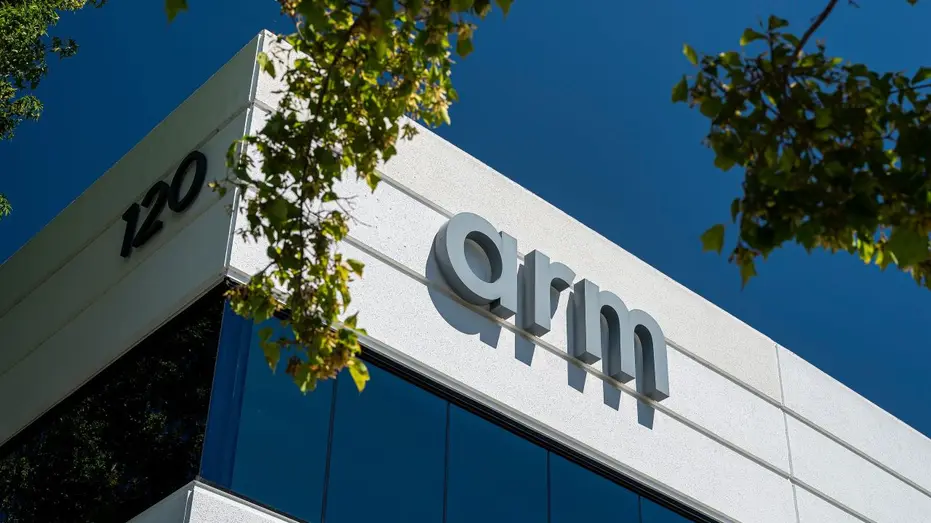ARM IPO
Initial public offering and tech aficionados are excited for Arm Property Plc
the first sale of stock, and with justifiable cause: Since more than two years ago, this is the largest tech IPO.
A ton is riding on its prosperity. For this situation, “achievement” for financial backers implies request is high and the cost ascends in the long stretches of time after the Initial public offering.
In any case, at first, the arrangement will generally need one regular purchaser: trade exchanged reserves.
Arm will send off its Initial public offering Thursday on the Nasdaq, selling 95.5 million offers at $51, the high finish of the normal value scope of $47-$51.
Tech financial backers progressively use ETFs to acquire openness to expansive tech areas, and subsectors, similar to semiconductors.
Be that as it may, a few financial backers who might want to help quick openness to the Arm Initial public offering through ETFs might be frustrated.
ETF files have incorporation rules
Because the ownership base tends to be more passive and long-term, ETFs are typically a desirable target for businesses to sell stock to.
In any case, this specific Initial public offering features a few troubles that even huge organizations like Arm have in gaining a more extensive possession base through ETFs.
Generally, ETFs are organized to follow files. These lists have decided that they should be painstakingly stuck to meet all requirements for consideration.
Tragically, incompletely because of Arm’s own choices and part of the way because of how the significant records are developed, ARM at first seems, by all accounts, to be ineligible for the biggest ETFs.
Issue #1: Arm isn't in the S&P 500
The biggest list supplier is S&P Worldwide. To be remembered for expansive innovation ETFs like the SPDR Innovation ETF (XLK), which tracks the S&P 500 Innovation record, a stock must initially be in the S&P 500, which Arm isn’t.
The first issue is that Arm is not a U.S. company; instead, it is a British company, which typically prevents it from being included in the S&P indexes.
Matt Bartolini, head of SPDR Americas Research at State Street Global Advisors, informed me, “Given that its domicile is in the UK, it is unlikely it would be included in the S&P 500.” That would reject it from consideration out of the door.”
State Road runs an enormous set-up of ETF items that are attached to S&P records, remembering the biggest ETF for the world, the SPDR S&P 500 ETF
(SPY).
Howard Silverblatt at S&P Worldwide likewise noticed that S&P requires a stock to have been exchanged for one year and that the amount of the latest four sequential quarters’ GAAP should be positive, alongside the latest quarter.
Next problem: a free float below 10%
Numerous tech organizations presently regularly float tiny measures of stock (10%-15% of the offers exceptional), in light of the fact that limiting stockpile builds the opportunity at greater expenses.
However, Arm has all the earmarks of being especially closefisted, drifting generally 9.3% of the organization, as indicated by Renaissance Capital.
That is one more issue for some ETFs, which by and large expect an organization to float 10% or a greater amount of the offers to be qualified for incorporation.
That is the situation with the S&P records, Bartolini tells me, as well as the biggest semiconductor ETF, the Van Eck Semiconductor ETF
(SMH), which likewise requires a free float of 10% or more.
Van Eck Chief Jan Van Eck let CNBC on Monday know that his firm was all the while assessing whether Arm would be qualified for consideration in his ETF.
Other list firms involved in ETFs have float necessities too. Todd Sohn, who covers ETFs at Strategas, lets me know that Vanguard Complete U.S. Market (VTI), which utilizes the CRSP U.S. Complete Market Record, likewise requires a 10% float for quick track of Initial public offerings.
There are ways of getting the float above 10%. First, SoftBank could use the greenshoe, an optional stock over-allotment, to add 15% more shares, giving them just over 10% more float.
When exactly would that occur? I was informed by Matt Kennedy from Renaissance Capital that although it may be mentioned in connection with the pricing, it is typically not. It can likewise be uncovered two or three days a short time later when they report the end. Or on the other hand, at the exceptionally most recent, a month or so a short time later in an 8-K or 10-Q documenting.”
Another way is just to sell extra offers after the half-year lockup period lapses.
Potential ETF buyers: Nasdaq-100 ETF, IPO ETFs
Numerous tech organizations presently regularly float tiny measures of stock (10%-15% of the offers exceptional), in light of the fact that limiting stockpile builds the opportunity at greater expenses.
However, Arm has all the earmarks of being especially closefisted, drifting generally 9.3% of the organization, as indicated by Renaissance Capital.
That is one more issue for some ETFs, which by and large expect an organization to float 10% or a greater amount of the offers to be qualified for incorporation.
That is the situation with the S&P records, Bartolini tells me, as well as the biggest semiconductor ETF, the Van Eck Semiconductor ETF
(SMH), which likewise requires a free float of 10% or more.
Van Eck Chief Jan Van Eck let CNBC on Monday know that his firm was all the while assessing whether Arm would be qualified for consideration in his ETF.
Other list firms involved in ETFs have float necessities too. Todd Sohn, who covers ETFs at Strategas, lets me know that Vanguard Complete U.S. Market (VTI), which utilizes the CRSP U.S. Complete Market Record, likewise requires a 10% float for quick track of Initial public offerings.
There are ways of getting the float above 10%. First, SoftBank could use the greenshoe, an optional stock over-allotment, to add 15% more shares, giving them just over 10% more float.
When exactly would that occur? I was informed by Matt Kennedy from Renaissance Capital that although it may be mentioned in connection with the pricing, it is typically not. It can likewise be uncovered two or three days a short time later when they report the end. Or on the other hand, at the exceptionally most recent, a month or so a short time later in an 8-K or 10-Q documenting.”
Another way is just to sell extra offers after the half-year lockup period lapses.
Every News Update

